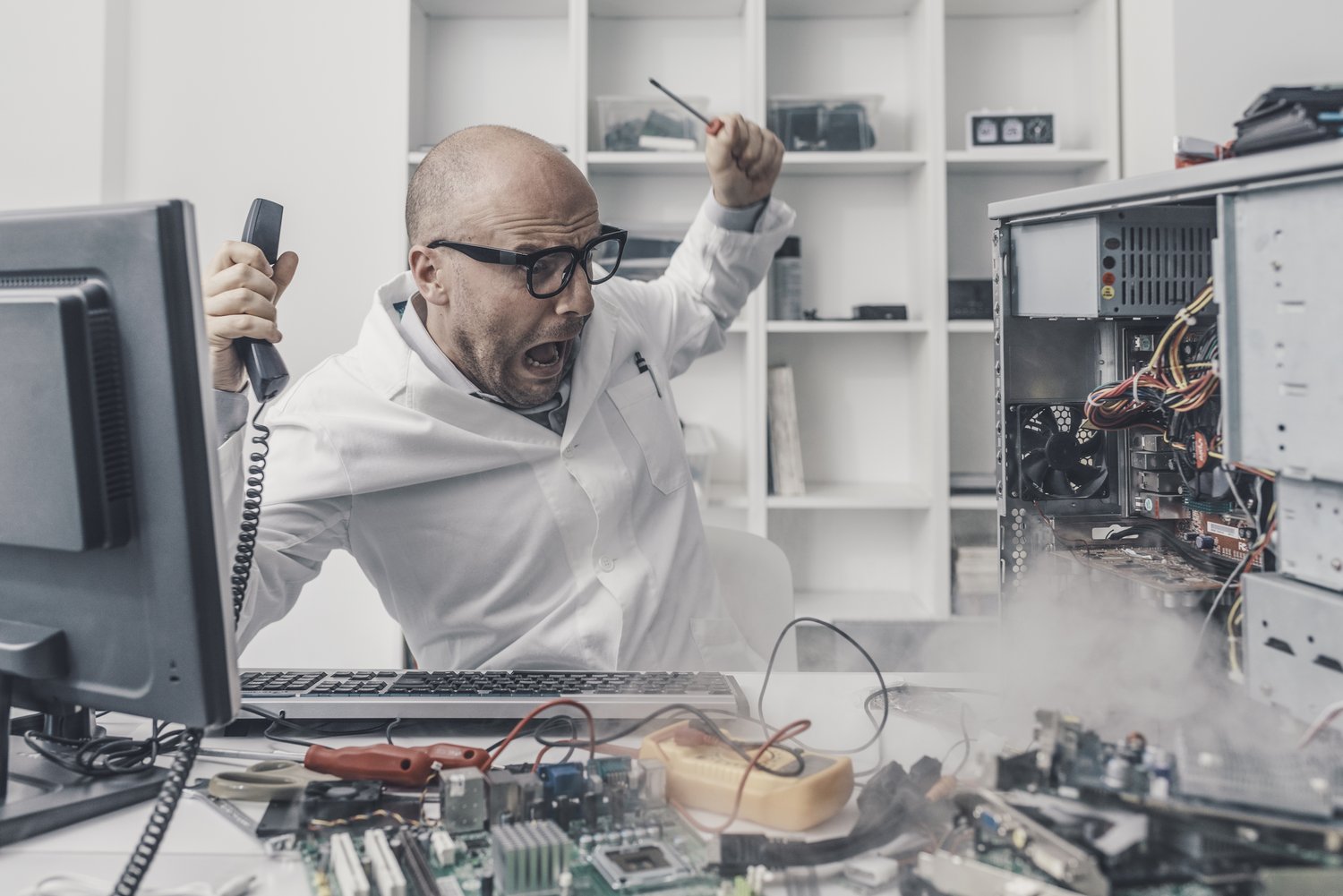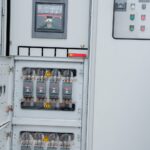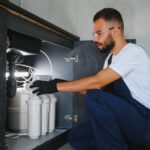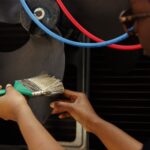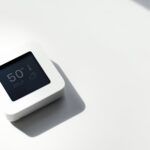Is your microwave stubbornly refusing to heat up, leaving your meals in the cold? This common kitchen setback can interrupt even the most organized meal plans, but don’t despair! With the right guidance and safety measures, diagnosing and fixing microwave heating issues can be a straightforward at-home task. This guide will arm you with essential insights into why your microwave might be malfunctioning, all while ensuring your safety remains a top priority.
- Explore the typical culprits behind a microwave’s heating failure and how to safely identify them.
- Learn crucial safety protocols to follow before embarking on any microwave repair journey at home.
- Identify the critical components within your microwave that could be affecting its heating ability and how to test them properly.
- Master effective DIY techniques to troubleshoot and resolve issues with your microwave quickly.
By the end of this article, you’ll have a comprehensive understanding of how to tackle the problem of a non-heating microwave, along with knowing when it’s best to call in professional help. Dive in to not only save your meals but also ensure your microwave operates safely and efficiently.
Understanding Microwave Not Heating Issues: DIY Diagnosis and Safety Checks
When your microwave suddenly stops heating, it can be frustrating and disruptive, especially if you rely on this appliance for quick meal preparations. Understanding the common reasons behind this issue can aid in efficient troubleshooting.
One frequent cause is a malfunctioning magnetron, the component responsible for generating microwave energy. If this part burns out, a microwave won’t heat food. Another prevalent issue is a defective door switch. Microwaves are designed to stop operating if the door isn’t securely closed, and a faulty switch may mimic this condition.
Moreover, a blown thermal fuse can prevent your microwave from functioning correctly. This safety feature cuts the power in case of overheating, but if it’s defective, it might erroneously shut down heating operations. Electrical problems like a damaged diode or a defective high voltage capacitor can also lead to heating failures.
To diagnose these problems, ensure that the power source is consistent. Check that your microwave is correctly plugged in and that the outlet is operational. Inspect the door and its latch for any visible damages or misalignments.
By understanding these factors, you can pursue a DIY diagnosis safely at home, potentially saving time and money on repairs. Remember, these tasks require careful handling to avoid further damage or safety risks.
Safety First: Precautions for Microwave Repairs
Before embarking on any DIY repairs, it’s crucial to prioritize safety. Microwaves, with their high voltage components, pose significant risks if not handled correctly.
Firstly, unplug the microwave to prevent any electrical accidents. This simple yet vital step ensures the appliance won’t be activated during your inspection or repair efforts. Always verify that the microwave is fully disconnected before proceeding.
Next, be aware of the residual charge that may linger in the capacitor. This component can store electricity, even when unplugged, which can cause severe shocks. Discharge the capacitor safely using a suitable resistor or consult a manual for specific guidance.
Use appropriate tools, such as insulated screwdrivers, when handling components. Avoid using bare hands when working close to sensitive areas to minimize the risk of electric shock.
Lastly, wear protective gear, including gloves and eye protection, to guard against accidental contact with sharp edges or broken parts. By adhering to these safety tips, you’ll enhance your ability to perform microwave repairs without compromising your well-being.
Microwave Components to Inspect: DIY Diagnosis and Safety Checks
When your microwave is not heating, it may be due to several key components failing. Identifying these parts and testing them properly is crucial for a successful diagnosis.
One common culprit is the high voltage diode. This component helps convert AC power to DC, and a faulty diode can prevent your microwave from generating enough power to heat. Testing the diode typically requires a multimeter. If the diode does not show continuity in one direction and a higher resistance in the other, it may need replacement.
Another component to examine is the magnetron, which is responsible for producing the microwave radiation that heats the food. Check for any burn spots or signs of damage. A continuity test can help determine if it’s functioning. If there’s no continuity, the magnetron might be defective.
The door switch is also a crucial part to inspect. If your microwave’s door switch isn’t engaging properly, the appliance won’t turn on or heat. Ensure the switches click when you press them. Using a multimeter, test for continuity. This can quickly verify if the switch is operational.
Finally, examine the thermal fuse. This safety component stops the microwave from overheating. If it blows, the microwave won’t heat. To check it, locate the fuse and test it with a multimeter. A lack of continuity indicates a blown fuse, which requires replacement.
Tips for Effective DIY Microwave Troubleshooting
Before delving into microwave troubleshooting, ensure you possess the right techniques and tools. Always have a multimeter at hand for testing electrical components. This tool is essential for assessing the connectivity and functionality of the parts within your microwave.
Familiarize yourself with the microwave’s manual. This offers invaluable information about the specific model’s components and troubleshooting sections. Understanding this can assist in quickly pinpointing potential issues.
Utilize online resources and forums dedicated to appliance repair. Engaging with communities can provide additional insight and troubleshooting tips from others who have experienced similar microwave heating problems.
When undertaking repairs, work in a well-lit area and be sure to disconnect the microwave from the power source before proceeding. This is paramount for your safety.
Lastly, if during your troubleshooting efforts any aspect seems unclear or too complex, do not hesitate to seek professional assistance. Recognizing your limitations can prevent further damage to both you and your appliance.
When to Call a Professional: Microwave Not Heating? DIY Diagnosis and Safety Checks
While performing DIY diagnosis on a microwave that is not heating can often lead to a quick fix, there are certain situations where seeking professional repair services becomes essential. Ensuring your safety and the appliance’s longevity should be the top priority.
Persistent Heating Issues: If, after conducting several DIY checks, your microwave still refuses to heat, it may indicate deeper, complex issues that require expert attention. Professional technicians are equipped with specialized tools and knowledge to diagnose and repair these intricate problems efficiently.
Unusual Noises and Smells: Unusual buzzing sounds or burnt odors could signal internal component failures, like magnetron or capacitor faults. Attempting to fix these on your own might pose risks due to the high voltage present in microwaves. A certified technician has the necessary experience to safely handle such repairs.
Display Panel Errors: Error messages or flickering displays can complicate diagnostics, as they often involve electronic faults beyond the typical DIY scope. Professionals can access advanced diagnostic equipment to precisely identify and resolve electronic malfunctions.
Safety Concerns: Safety is paramount when dealing with electrical appliances. If you observe sparks, smoke, or any signs of damage to the casing or door seals, stop using the microwave immediately and call a professional. Qualified repair technicians follow rigorous safety protocols to address hazardous situations effectively.
Engaging a professional service not only ensures your microwave is repaired correctly but can also help prevent future issues. They can provide expert advice on maintaining your appliance for long-term efficiency and safety. So, when in doubt, don’t hesitate to reach out to a microwave repair expert for a thorough and safe resolution.
Common Questions About Microwave Not Heating Issues
Why is my microwave not heating?
- Common Causes: faulty door switch, defective magnetron, or malfunctioning diode.
Can I fix a microwave if it’s not heating?
Yes, but only attempt basic checks like ensuring the door is closing properly; for other issues, professional help is recommended.
What safety precautions should I take before repairing my microwave?
- Unplug the microwave to ensure no electrical risk.
- Discharge the capacitor as it can store high voltage.
Which microwave components should I inspect first if it isn’t heating?
- Door Switch: ensures door is properly closed.
- Magnetron: produces microwave energy.
- Diode: converts AC to DC.
When should I call a professional for microwave issues?
- If the microwave shows complex electrical problems or persistent issues after DIY attempts.

